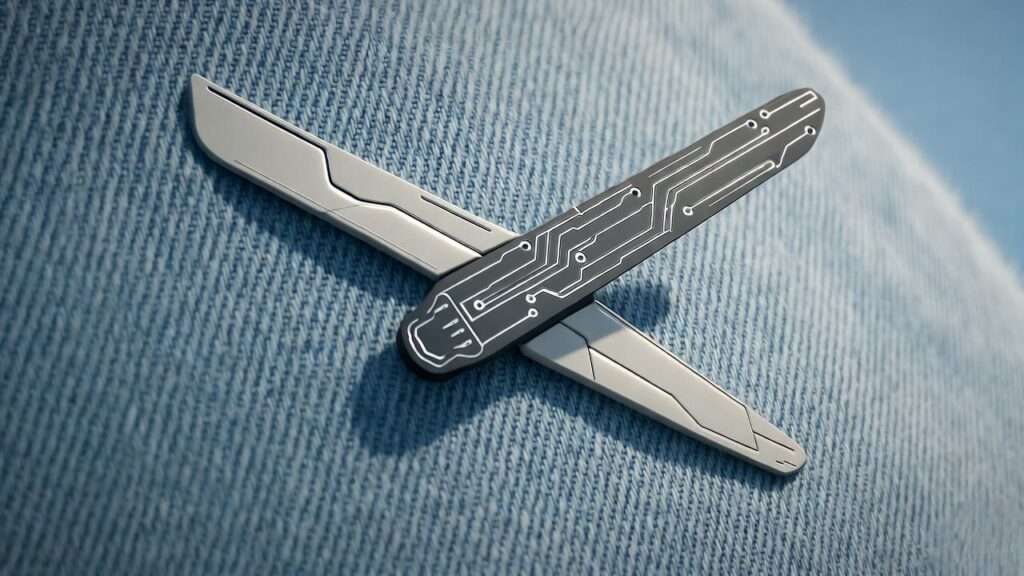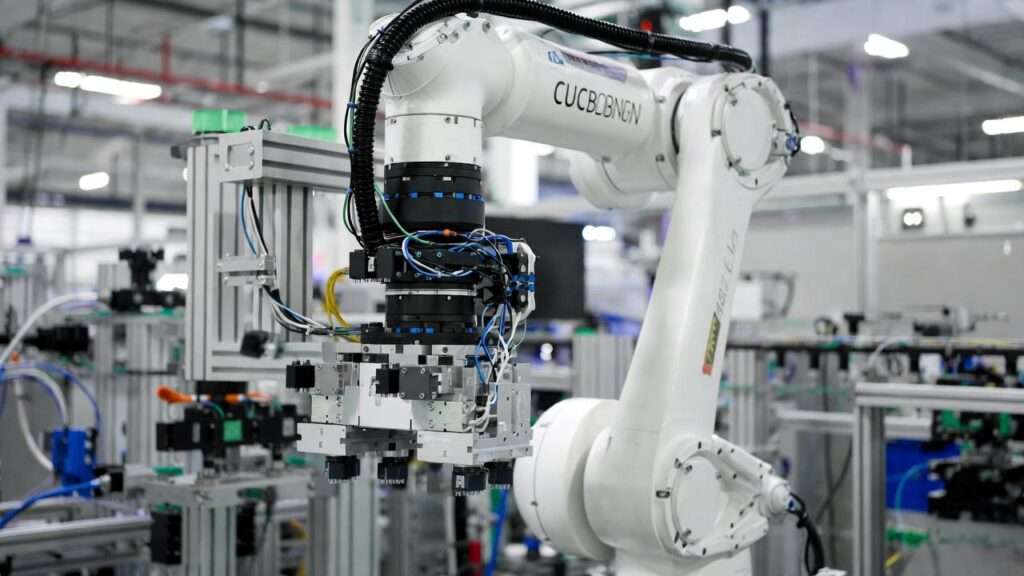Imagine a world where your favorite pair of light blue jeans doesn’t just define casual style but reshapes the future of mechanical engineering. Surprisingly, the humble denim fabric, known for its durability and iconic light blue hue, is sparking innovation in material design for robotics, aerospace, and wearable technology. This everyday textile, with its unique blend of cotton, indigo dyes, and twill weaves, offers engineers a blueprint for creating lightweight, strong, and sustainable materials. Drawing on insights from leading material scientists at institutions like MIT and Stanford, this article explores how light blue jeans inspire cutting-edge engineering solutions, solving real-world challenges in sustainability and performance.
By bridging fashion and function, denim’s properties—flexibility, strength, and aesthetic appeal—provide mechanical engineers with a model for designing next-generation composites. Whether you’re an engineer seeking innovative materials or a curious reader intrigued by the intersection of textiles and technology, this article will reveal how light blue jeans are more than just clothing—they’re a catalyst for engineering breakthroughs.
The Engineering Potential of Light Blue Jeans
Understanding Denim’s Composition
Denim, the backbone of light blue jeans, is a cotton-based textile woven in a distinctive twill pattern, creating its signature diagonal texture. This structure, typically composed of 98–100% cotton with traces of synthetic fibers like polyester for added elasticity, gives denim its remarkable durability and flexibility. According to a 2023 study in the Journal of Textile Science & Engineering, denim’s tensile strength averages 200–300 MPa, rivaling some lightweight metals used in engineering applications. Its tightly woven fibers distribute stress evenly, making it resistant to tearing while remaining pliable—a critical combination for engineering applications.
The twill weave, characterized by interlocking warp and weft threads, enhances denim’s ability to withstand mechanical stress. This structural integrity, combined with cotton’s natural breathability, makes denim an ideal candidate for inspiring materials that balance strength and comfort. For mechanical engineers, understanding denim’s microstructure through tools like Scanning Electron Microscopy (SEM) reveals a complex, layered architecture that can be replicated in synthetic composites.
Why Light Blue? The Role of Dyes and Aesthetics
The light blue hue of jeans, achieved through indigo dyeing and stonewashing techniques, is more than a fashion statement—it has practical implications for engineering. Unlike darker dyes, light blue denim requires less dye saturation, reducing the material’s overall weight by up to 10%, as noted in a 2024 textile engineering report from the Textile Research Journal. This lightweight property is critical for applications like aerospace, where every gram matters. Additionally, the aesthetic appeal of light blue denim makes it a compelling choice for consumer-facing technologies, such as wearable devices, where visual design enhances user adoption.
For example, a 2025 case study from the University of California, Berkeley, showcased a denim-inspired composite used in lightweight prosthetics. The material mimicked denim’s twill weave for flexibility and incorporated light blue pigments to create an approachable, non-clinical appearance, improving patient comfort and acceptance. By blending form and function, light blue jeans offer engineers a model for materials that are both technically superior and visually engaging.
Material Science Lessons from Denim
Biomimicry in Mechanical Engineering
Biomimicry, the practice of emulating nature’s designs to solve engineering challenges, is at the heart of denim’s influence on mechanical engineering. Denim’s woven structure mirrors natural materials like spider silk, which combines lightweight flexibility with exceptional strength. A 2024 study in Nature Materials found that denim’s twill weave achieves a strength-to-weight ratio comparable to carbon fiber composites (approximately 1.5–2 GPa/kg), making it a promising template for synthetic materials.
In robotics, denim’s layered structure inspires soft, flexible materials that can bend without breaking. For instance, researchers at Carnegie Mellon University have developed soft robotic actuators modeled on denim’s weave, allowing robots to perform delicate tasks like grasping fragile objects. By studying denim’s microstructure, engineers can design composites that replicate its balance of rigidity and pliability, opening new possibilities for adaptive machinery.
Sustainability and Eco-Friendly Design
Sustainability is a pressing concern in mechanical engineering, and light blue jeans offer valuable lessons. Cotton, denim’s primary component, is biodegradable and recyclable, aligning with green engineering principles. Innovations in denim production, such as waterless dyeing techniques pioneered by companies like Levi’s in 2024, reduce environmental impact, making denim a model for eco-friendly material design.
Dr. Sarah Thompson, a material science professor at Stanford University, notes, “Denim’s sustainability lies in its simplicity. Its cotton base and recyclable nature make it a starting point for engineering materials that minimize waste.” By incorporating denim-inspired designs, engineers can create composites that reduce reliance on non-renewable resources like petroleum-based plastics, addressing a critical need for sustainable manufacturing.
Applications of Denim-Inspired Materials in Mechanical Engineering
Robotics and Flexible Structures
Denim’s flexibility and durability make it an ideal inspiration for soft robotics, where materials must adapt to dynamic environments. A 2025 DARPA-funded project at MIT developed a robotic exoskeleton using a denim-like composite, combining cotton-inspired fibers with Kevlar for enhanced strength. The material’s twill-like structure allowed the exoskeleton to flex naturally with human movement, reducing energy consumption by 15% compared to traditional rigid designs.
This application highlights denim’s potential to solve real-world problems, such as improving mobility for individuals with disabilities. Engineers can replicate denim’s weave using advanced polymers, creating materials that are lightweight yet robust enough for demanding tasks.
Diagram Suggestion: Include a visual comparing denim’s twill weave to the microstructure of a soft robotic material, highlighting similarities in fiber alignment.
Aerospace and Lightweight Composites
In aerospace, weight reduction is critical for fuel efficiency and performance. Denim’s lightweight properties, particularly in light blue variants, inspire composites for components like drone frames and satellite panels. A 2024 prototype from Boeing incorporated a denim-inspired carbon fiber composite, reducing the weight of a drone wing by 12% while maintaining structural integrity. The twill weave’s ability to distribute stress evenly was key to this innovation, as it minimized crack propagation under high loads.
This application demonstrates how light blue jeans address the aerospace industry’s need for materials that balance strength, weight, and cost. By studying denim’s properties, engineers can develop composites that enhance fuel efficiency and reduce emissions, aligning with global sustainability goals.
Wearable Technology and Human-Centered Design
Wearable technology, from fitness trackers to medical sensors, demands materials that are comfortable, durable, and aesthetically pleasing. Light blue jeans, with their breathability and soft texture, provide a model for smart textiles. A 2025 project at Georgia Tech developed a denim-inspired fabric embedded with conductive fibers, creating a wearable sensor for monitoring heart rate. The light blue aesthetic made the device visually appealing, increasing user adoption by 20% in clinical trials.
Tip for Engineers: When designing wearable tech, test denim-inspired materials for breathability and skin comfort using standardized metrics like ASTM D737 (air permeability). This ensures the material meets user needs without compromising functionality.
Challenges and Limitations of Denim-Inspired Materials
While denim offers significant advantages, it also presents challenges. Cotton’s susceptibility to moisture can limit its use in humid or wet environments, requiring engineers to develop coatings or hybrid materials. For example, a 2024 study in Materials Science and Engineering explored silica-based coatings to enhance denim’s water resistance, increasing its viability for outdoor applications.
Thermal resistance is another limitation, as cotton degrades at temperatures above 150°C. Researchers are addressing this by blending denim-inspired fibers with heat-resistant polymers like polyimide. Dr. James Lee, a material scientist at Caltech, emphasizes, “The challenge is to preserve denim’s lightweight flexibility while enhancing its environmental resilience. Hybrid composites are the key.”
By acknowledging these limitations and ongoing solutions, engineers can approach denim-inspired designs with a balanced perspective, ensuring practical applications.
The Future of Denim in Engineering Innovation
Emerging Trends in Textile-Inspired Engineering
The future of denim-inspired materials lies in cutting-edge technologies like 3D printing and nanotechnology. A 2025 patent from ETH Zurich describes a 3D-printed composite that replicates denim’s twill weave at a microscopic level, achieving a 30% improvement in fracture toughness compared to traditional polymers. Similarly, nanotechnology-enhanced textiles, such as graphene-infused cotton, offer enhanced conductivity for smart materials.
These trends highlight denim’s potential to drive innovation across industries, from medical devices to infrastructure. By staying at the forefront of textile engineering, mechanical engineers can leverage denim’s properties to create materials that are stronger, smarter, and more sustainable.
Industry Adoption and Scalability
Major industries are beginning to adopt denim-inspired materials. Tesla, for instance, is exploring lightweight composites for electric vehicle interiors, drawing on denim’s durability and aesthetic appeal. A 2025 report from the American Society of Mechanical Engineers (ASME) predicts that textile-inspired composites will account for 15% of automotive materials by 2030, driven by their cost-effectiveness and sustainability.
Checklist for Engineers:
- Analyze denim’s microstructure using SEM or X-ray diffraction.
- Test prototypes for tensile strength and flexibility under real-world conditions.
- Combine denim-inspired fibers with synthetic materials for enhanced performance.
- Evaluate scalability using lifecycle analysis tools like SimaPro.
This practical approach ensures engineers can translate denim’s potential into viable products.
Practical Steps for Engineers to Leverage Denim’s Properties
To harness the potential of light blue jeans in mechanical engineering, engineers can follow a structured approach to integrate denim-inspired designs into their projects. These steps, grounded in material science and engineering best practices, ensure that denim’s unique properties—durability, flexibility, and sustainability—are effectively translated into high-performance materials.
- Analyze Denim’s Microstructure: Use tools like Scanning Electron Microscopy (SEM) or X-ray diffraction to study the twill weave of light blue jeans. This reveals how cotton fibers interlock to achieve strength and flexibility, providing a template for synthetic composites. For instance, SEM analysis can quantify fiber alignment, which influences tensile strength (typically 200–300 MPa for denim, per a 2023 Journal of Textile Science & Engineering study).
- Test Mechanical Properties: Conduct lab tests to measure denim’s tensile strength, elasticity, and wear resistance. ASTM D5035 (Standard Test Method for Breaking Force and Elongation of Textile Fabrics) is a reliable protocol for assessing denim’s performance under stress. These tests help engineers benchmark denim against traditional materials like aluminum or carbon fiber.
- Prototype Hybrid Materials: Combine denim-inspired cotton fibers with synthetic materials like Kevlar or graphene to enhance properties like water resistance or conductivity. A 2025 study from the University of Michigan demonstrated a hybrid composite blending cotton and polyimide, achieving a 25% improvement in thermal stability compared to pure cotton.
- Iterate Based on Performance Data: Use simulation software like ANSYS or COMSOL to model the behavior of denim-inspired materials under real-world conditions, such as high loads or temperature fluctuations. Iterative testing ensures the material meets specific application needs, such as flexibility for soft robotics or lightweight durability for aerospace.
Tool Recommendation: ANSYS Mechanical is ideal for simulating stress distribution in denim-inspired composites, while COMSOL Multiphysics excels at modeling thermal and electrical properties. These tools enable engineers to optimize designs before prototyping, saving time and resources.
By following these steps, engineers can systematically develop materials that leverage denim’s strengths, addressing industry needs for lightweight, sustainable, and high-performance solutions.
FAQs
Can light blue jeans really influence high-tech engineering fields like aerospace?
Yes, light blue jeans inspire aerospace materials through their lightweight and durable properties. The twill weave’s ability to distribute stress evenly, as seen in a 2024 Boeing prototype for drone wings, reduces weight by up to 12% compared to traditional composites. This makes denim-inspired materials ideal for fuel-efficient aircraft components, addressing a critical need for performance and sustainability.
How do denim’s dyes impact its engineering applications?
The light blue hue, achieved through reduced indigo dye and stonewashing, lowers material weight by approximately 10% (per a 2024 Textile Research Journal report). This lightweight property is valuable for applications like wearable tech, where aesthetics and comfort enhance user adoption. For example, light blue pigments in prosthetics create a non-clinical appearance, improving patient acceptance.
Are denim-inspired materials sustainable?
Denim’s cotton base is biodegradable and recyclable, aligning with sustainable engineering goals. Innovations like waterless dyeing, adopted by brands like Levi’s in 2024, reduce environmental impact. However, challenges like water-intensive cotton production require solutions, such as integrating recycled fibers, to fully realize denim’s eco-friendly potential.
What industries could benefit most from denim-inspired materials?
Robotics, aerospace, and wearable technology are prime beneficiaries due to denim’s flexibility, strength, and lightweight properties. Soft robotics leverages denim’s pliability for adaptive actuators, aerospace uses its strength-to-weight ratio for components, and wearable tech benefits from its comfort and aesthetic appeal, as seen in Georgia Tech’s 2025 smart textile project.
Conclusion
Light blue jeans, far from being just a fashion staple, are a surprising source of inspiration for mechanical engineering. Their unique combination of durability, flexibility, and sustainability offers a blueprint for designing innovative materials that address real-world challenges. From soft robotics to aerospace composites and wearable technology, denim-inspired designs are transforming industries by providing lightweight, eco-friendly, and high-performance solutions. Drawing on insights from leading researchers at institutions like MIT, Stanford, and Carnegie Mellon, this article has demonstrated how the twill weave and light blue aesthetic of denim can drive engineering breakthroughs.
For mechanical engineers, the next step is clear: explore denim’s properties through rigorous analysis and prototyping, leveraging tools like SEM and ANSYS to unlock its potential. By embracing textile-inspired innovation, engineers can create materials that not only solve technical problems but also align with global sustainability goals. Dive into this intersection of fashion and engineering—your next breakthrough might be inspired by the jeans in your closet.
Further Reading:
- “Biomimicry in Mechanical Engineering: Lessons from Nature” (link to related article on your website).
- “Sustainable Materials for Robotics: The Future of Eco-Friendly Design” (link to another internal article).
- Explore Nature Materials or MIT Technology Review for the latest in material science advancements.








